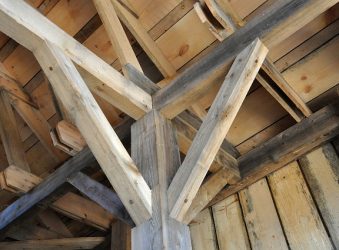
UNDERSTANDING GIRDERS AND BEAMS FOR HOME FOUNDATIONS IN CHARLOTTE
Like any field, construction has its own lingo. Some of those terms have become fairly commonplace for home owners, but others can leave one a bit confused. Such is the case with girders and beams in home foundation support.
Regardless of the size of your Charlotte home, you can be assured that it contains each of these structural elements – as they each serve a specific purpose in ensuring that your home’s foundation and support system is sound.
UNDERSTANDING THE DIFFERENCE BETWEEN A BEAM AND A GIRDER
While these terms may get used interchangeably, they are not synonyms. Rather, they are two distinct parts of your home’s design. As homeowner you don’t have to know the difference, but it is helpful.
A girder is the main horizontal support of a structure, and is used to support the smaller beams. Beams are installed to accommodate shear stresses, while girders are stiffer. Therefore, all girders are beams, but not every beam is a girder. A simple rule of thumb is that if a component is to transfer a load to a larger beam, it’s just a beam; but, if it will transfer a load directly to the columns it sits on, then it is a girder.
“So, what is the difference?” Glad you asked!
Size – Yes, it matters! Typically, a girder is a much larger beam that is used to support framework such as the joist for decks, as well as roofing. It should be noted that a girder might also be referred to as a cantilevered beam or a drop beam (hence the confusion!). The larger your home, the more important it is that the girder beam(s) be long enough and strong enough to provide adequate support. Without the proper amount of support, you will eventually have issues with sagging, uneven flooring.
Installation – A girder is installed perpendicular to the joists on any structure. They are nailed directly to the framework of a structure, and do not require joist hangers. They typically have an I-Beam cross section that has a two-load bearing flanges and a stabilizing web. It rests against the vertical posts which hold up the joists. It should span horizontally along the foundation of a structure but stand vertically so that the beam’s flat side faces outward and not up and down.
Fabrication – Often a girder is custom designed based on amount of stability needed, deck placement sequence, plate sizing, flange sizing and welded connections. Fabricating a beam is not as stringent as the girder will be supporting much of the weight.
Beams and girders are an integral part of your home’s construction process. If they are not installed correctly, or perhaps have begun to weaken due to age, ground shifting or natural causes, then you need to have them repaired or replaced. Indicators that beams or a girder are no longer efficient are bowing floors, cracked drywall, and sagging roofs.
If you suspect that your home’s girder or beam system is not as secure as it needs to be, then it is wise to have a Sherrill team member come out for an inspection. We will be able to assess any problems and determine what steps need to be taken to correct the problem(s). Contact us today to learn more.



